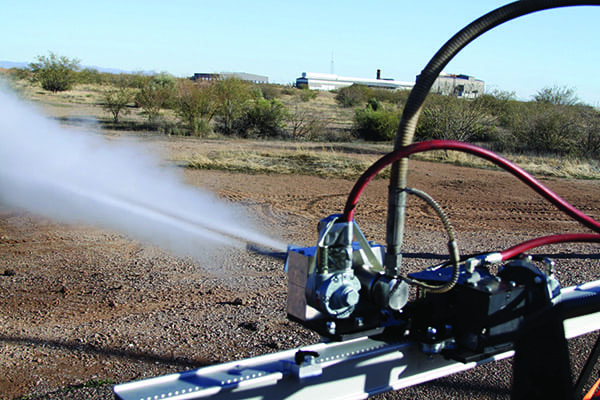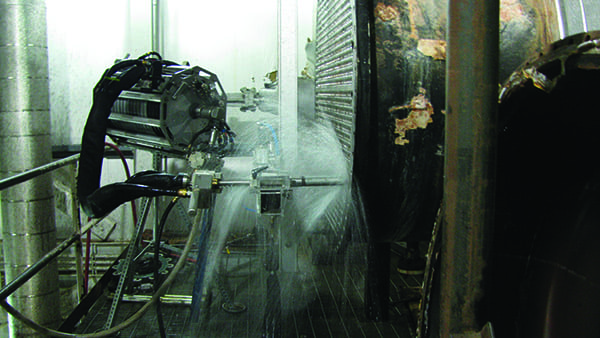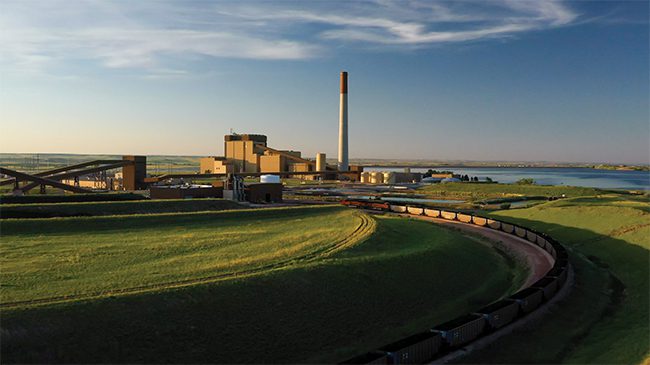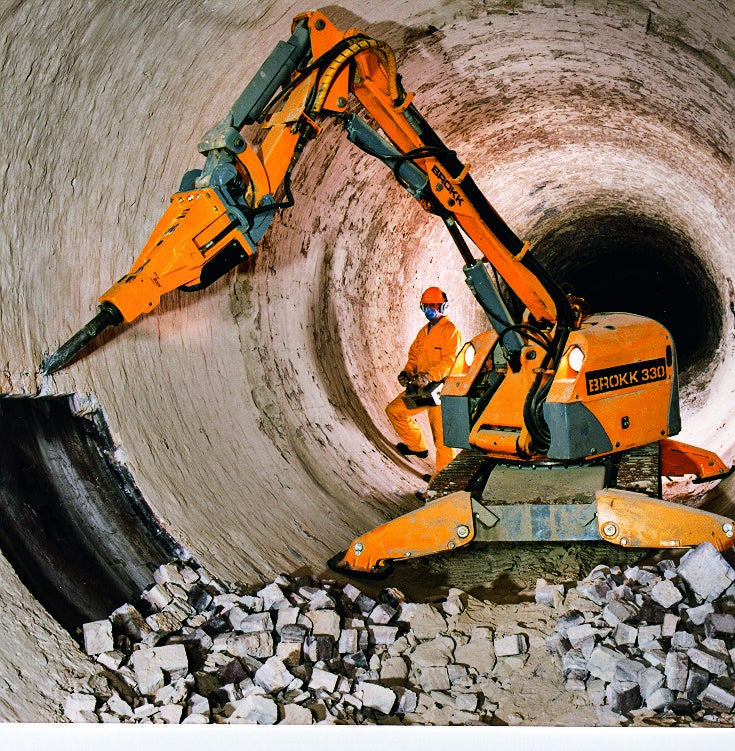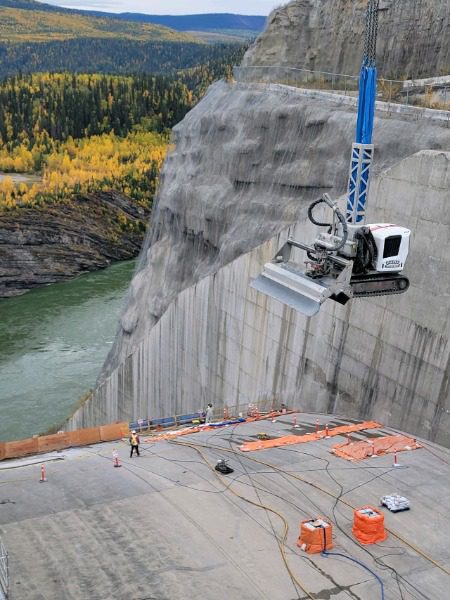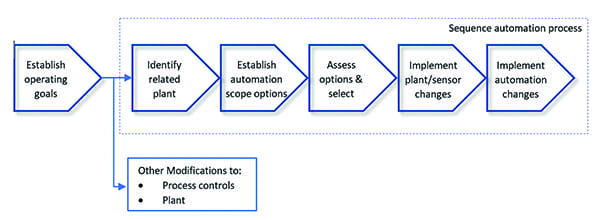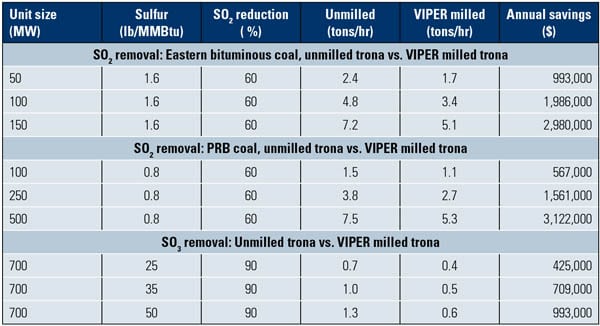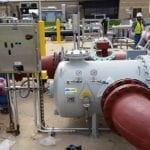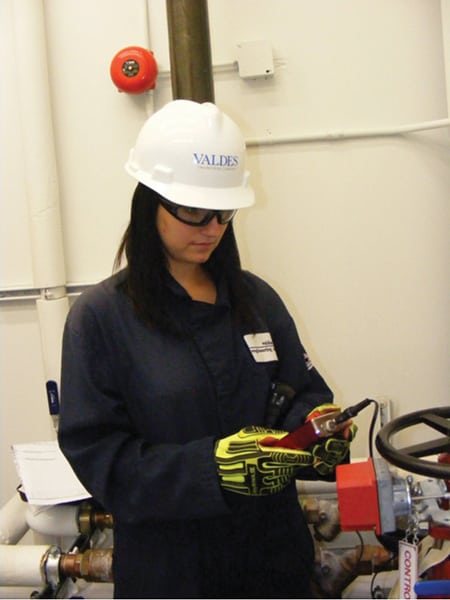Just a decade ago, a hydroblasting contractor was considered cutting-edge if he owned a spinning nozzle for his shotgun and a 2-D tank cleaning tool. Now, the next evolution in hydroblasting technologies is here, as robotics and automated tools are being developed and brought to market at an ever-increasing pace, allowing contractors to perform more efficiently, safely, and quickly, and with increased customer satisfaction.
The new robotics and automated tools for the industrial cleaning industry have significantly increased operator safety in what can be a high-risk job. By adding a distance factor from the nozzle to the operator, the new equipment allows the tools to be operated remotely (Figure 1). The new set-up also decreases operator fatigue, allowing for increased productivity. Another benefit of robotics and automation: reducing the possibility of human error, allowing for delivery of consistent results.
Previously, hand-lancing heat exchangers (vertical or horizontal) was the industry standard for cleaning tube bundles. It was not the safest task, it did not deliver consistent results, and it often ended in operator fatigue due to the task’s repetitive nature. Today, there are several automated alternatives for cleaning tubes, ranging from single- to triple-lance units that distance the operator from danger. The automated versions of these tools deliver consistent nozzle-to-tube time at a constant feed rate, insuring that 100% of the tube is cleaned without depending on an operator to manually feed the lance. With the addition of the dual- and triple-lance tools, the time on-site is decreased, and the customers’ up-time is greatly enhanced.
Some operators have noted a progressive decrease in on-site time over the past decade as tooling has improved. With the early introduction of a single-lancing automated tool, a decrease in on-site time from 10% to 15% was realized, with more consistent tube cleaning. As feed systems improved in the lancing tools, the cleaning percentage of each tube also increased. With the addition of the first single-lancing tool, there was a dramatic decrease in operators’ repetitive motion injuries, and a safer work zone was achieved as the operator was distanced from the tool.
Operators have seen a 35% decrease in on-site time with the use of triple-lance units. The new tools are lighter, more efficient to set up, and feed rate systems ensure that 100% of the tube is cleaned in a single pass.
Progressive improvements in borescope technologies have also reduced time on-site as operators can now document the success of tube-cleaning processes. The new technology allows providers to deliver a video of the finished product to the customer, minimizing the time required by the customer to perform inspections at the end of the project.
Robotics also is changing the water-blasting space, increasing operator safety by distancing the operator from the nozzles and potentially hazardous environments, and allowing the user to remotely operate the cleaning tools. Robotic shotgun units, track-mounted shotgun units, and remotely operated water cannons all allow for remote water blasting in confined spaces (Figure 2), hazardous atmospheres, and hazardous locations—without risk to operators.
The evolution of specialty tools has influenced the possible types of hydroblasting jobs and provided safer alternatives on the job site. These tools range from true 3-D tank and vessel cleaning equipment, to a wide assortment of pipe-cleaning heads and centralizers. In addition, the versatility and choices of accessories, including rotary shotgun nozzles, rotary lance nozzles, and straight and curved pipe nozzles, make the job safer, while delivering consistent results.
The evolution of hydroblasting tools has been aided by upgrades in nozzle designs over the past decade. Nozzles can be specifically manufactured to meet a customer’s unique project needs, while ensuring they deliver the required flow, pressure, and direction or angle.
As the industry incorporates these technology advancements, such as video feeds, more precise nozzles, robotics, and additional automated tools, it ushers in a new age of hydroblasting, allowing contractors to increase safety and performance, and decrease time on-site, which in turn increases customer uptime, productivity, and satisfaction.
—Daniel de la Torre is business development manager at AIMS Companies.


